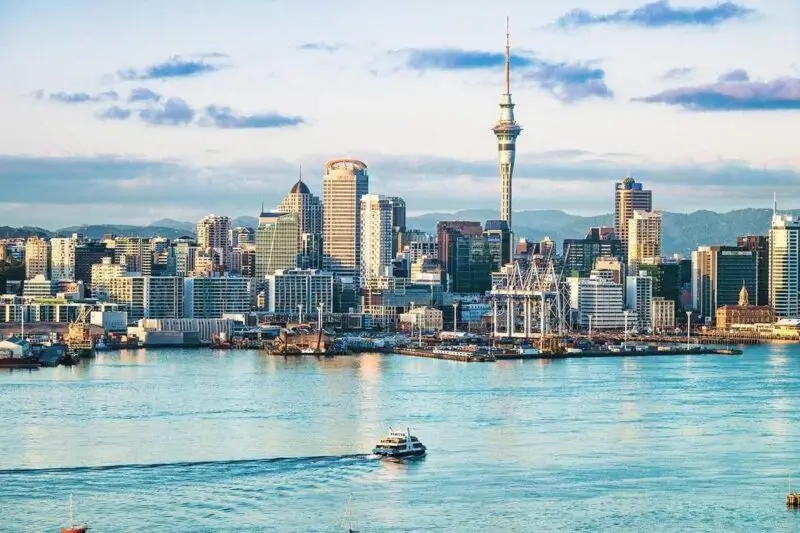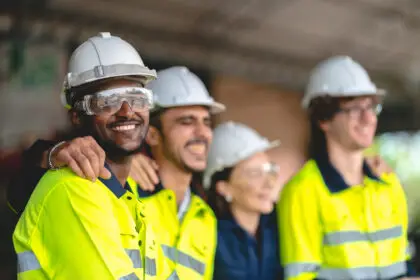An Insight Into Our Neighbouring Nation
As an Australian-owned company, we share a strong bond with our partners in New Zealand. With so many cultural and geographical similarities between us, you wouldn’t be mistaken for assuming that our statistics and trajectories around safety were similar too. However, when you take a look into the safety data in New Zealand, the results paint a very different picture.
Despite our similarities, the safety trends in Australia have been indicating a positive downward trend towards reduced major safety incidents. But unfortunately, in New Zealand, the data indicates that safety performance is actually getting worse.
Especially when looking at serious injury and disease claims, New Zealand has been on a steady upward trajectory towards larger numbers of claims while in Australia, we’ve been seeing the opposite result.
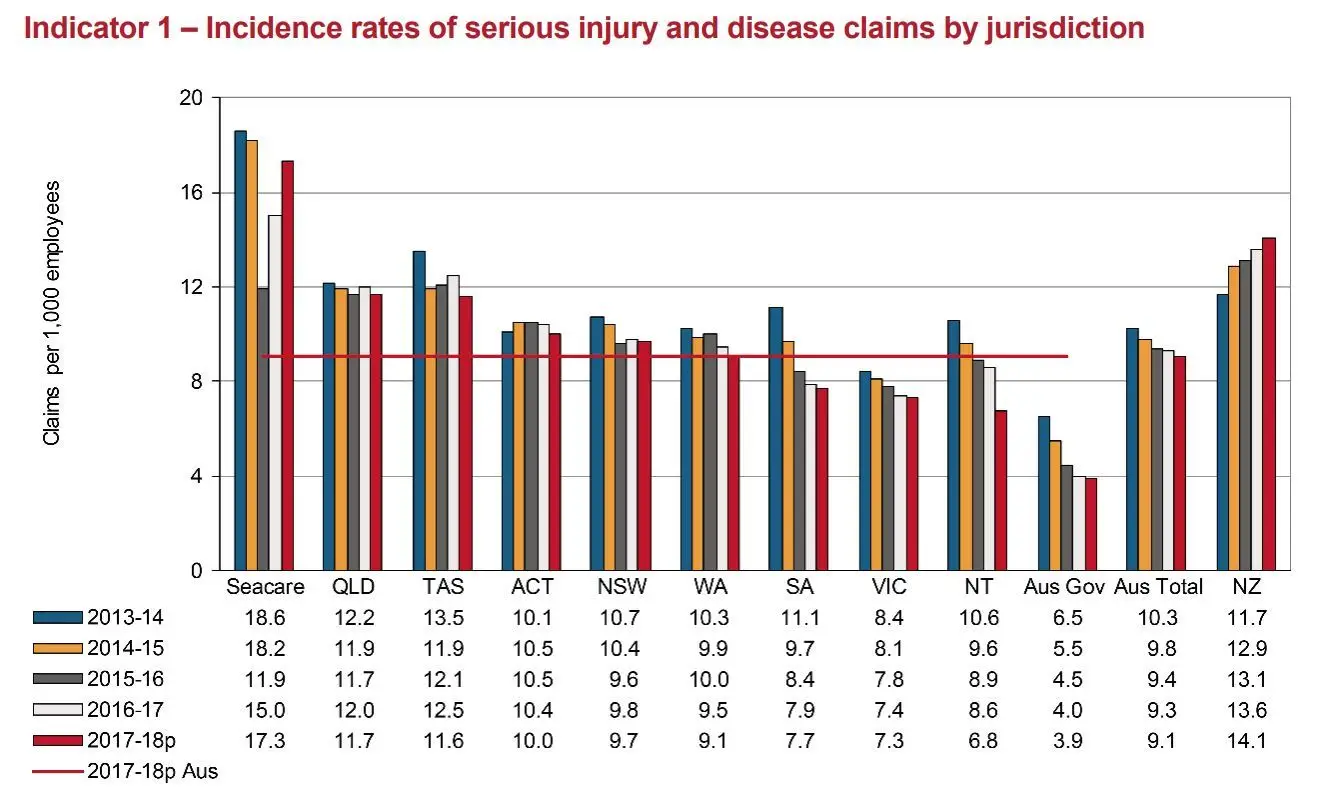
Source: Safe Work Australia. (2020). Comparative Performance Monitoring Report: Part 1 – Work Health & Safety Performance.
What makes this statistic more concerning is that while Australia has almost five times the population of New Zealand, New Zealand still has a larger number of total claims made annually.
While this could partially be attributed to the fact that New Zealand has a government-funded insurance for claims of this nature, making individuals more likely to put in a claim as there’s no insurance premium for self-employed workers or companies, it still doesn’t explain the increasing number of claims happening year on year.
Beyond that, when you look at compensated work-related disease fatalities, New Zealand has half the number of compensated fatalities that Australia has, while only having 20% of our population. That means that the average worker in New Zealand is 2.5 times more likely to claim compensation for a work-related disease fatality than their Australian counterparts.
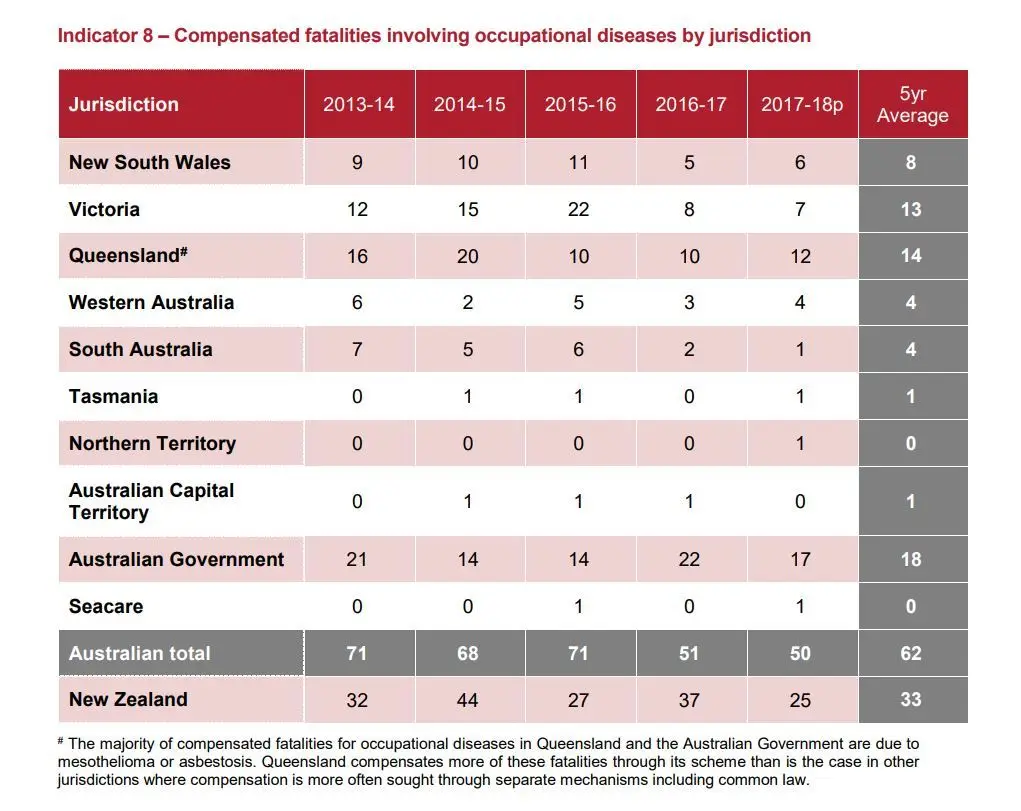
Source: Safe Work Australia. (2020). Comparative Performance Monitoring Report: Part 1 – Work Health & Safety Performance.
So, the question is—with so many similarities between us as partnering nations, what’s driving this growing safety gap?
Breaking down the safety gap
During our time as safety experts, we’ve worked closely with a range of clientele across New Zealand, giving us a first-hand insight into some of the key factors that may be contributing to this growing discrepancy.
1. Safety is usually industry-driven. In Australia, that means mining.
Generally speaking, safety tends to be driven by industry. In Australia, one of our largest industries and our biggest exports is mining—an area that has been under constant scrutiny over its safety performance. As such, this increased level of focus and attention on safety may have paved the way for a country-wide focus on safety.
On the other hand, New Zealand’s primary industries are agriculture, construction and manufacturing—industries with a high-production focus. This could have led to a larger focus being placed upon production measures, instead of being directed towards safety performance.
2. A punishment-based approach to safety may be accelerating the gap.
During our engagements with our clients in New Zealand, we’ve also noticed a tendency to leverage a punishment-focused approach when dealing with safety incidents. That’s where organisations focus on enforcing punitive measures to motivate their workers to adhere to optimal safety behaviours. When a safety incident inevitably arises, they search for someone to blame and punish for the issue—instead of focusing on identifying and mitigating the factors that contributed to the incident occurring in the first place.
The issue with this approach is that over time, it triggers a fear of negative repercussions in workers when it comes to reporting safety incidents. In turn, this can lead to substantial underreporting of safety incidents—robbing you of countless learning opportunities to prevent major safety incidents from occurring.
Coupled with our research indicating that 86% of organisations operate within a negative safety culture where safety isn’t viewed as a priority, it’ll come as no surprise that this punishment-based approach to safety performance only perpetuates the issue.
3. There’s too much focus on policies and procedures over people.
Another common theme that we’ve noticed is this notion that organisations need to first perfect their policies and procedures before engaging in cultural transformation or investing in the people component of safety.
There’s a tendency to view investing in their people as being one of the last steps in the safety improvement journey. In fact, they may even view their people as being safety liabilities—instead of viewing them as potential safety assets.
In turn, this perpetuates a lack of safety culture maturity and also negatively impacts the benefits that they would have otherwise gained from their investments in procedural and environmental factors.
With that in mind, as an organisation in New Zealand that’s looking to shift the pendulum back in the other direction, where do you even get started?
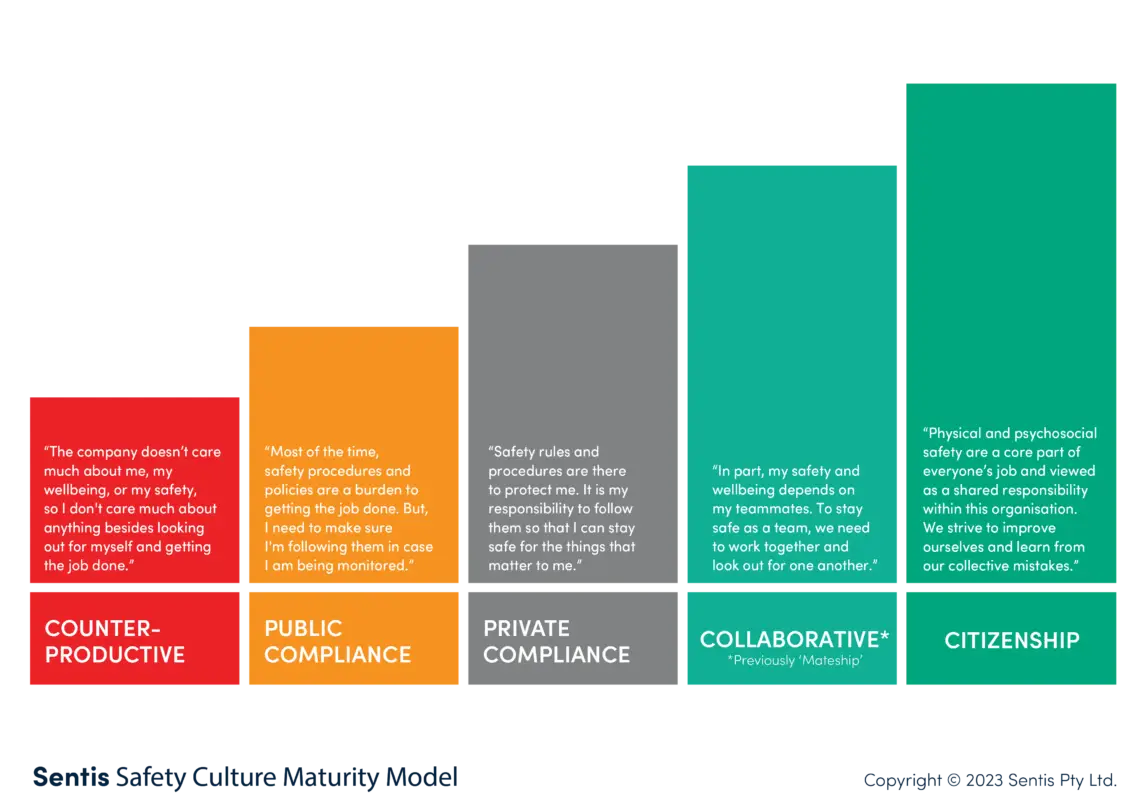
Reversing the incident growth rate
As it currently stands, this focus on the enforcement of punitive measures is placing organisations at an ever-increasing risk of developing a Public Compliance safety culture. That is, a negative safety culture where workers only behave safely when they’re under supervision—while foregoing their responsibilities when they aren’t being watched. So, the first place to start addressing the problem is to shift your attention away from punishment and towards safety collaboration as a key avenue to drive your safety performance forward.
Some key avenues to get you started include:
1. Ensuring your team feels safe to speak up
As humans, we have a natural tendency to avoid negative or uncomfortable situations whenever possible. Our willingness to express our concerns or opinions and potentially put ourselves in an uncomfortable situation is based on our levels of psychological safety. That is, a measure of how likely we think we are to experience negative repercussions for expressing our ideas, concerns or opinions.
Without high levels of psychological safety in your workplace, when potential hazards or safety concerns arise, your team is less likely to express their ideas or concerns as they’re worried about the repercussions that they’ll have to face. The more you focus on a punishment-based approach to safety, the lower their levels of psychological safety and the less likely your team will be to speak up for safety.
On the other hand, by taking a more positive approach, you can show your team that they have your support when hazards and incidents inevitably arise instead. By focusing on how you can learn and improve from each incident, instead of simply finding someone to blame for them, you increase your team’s motivation to truthfully report and share their concerns around future hazards and incidents.
2. Evidencing leadership’s commitment to safety
While it’s easy to point the finger at your front-line workers for safety issues, the reality is that much of their behaviour is driven by what they observe from their supervisors and leaders. If your leaders aren’t adhering to optimal levels of safety behaviours, then your workers can’t be expected to hold up to the same standards.
Instead, take a top-down-approach by ensuring that your organisation’s leaders are actively expressing their commitments to safety and adhering to optimal levels of safety behaviour at all times. Even small acts such as management stepping out into the field and talking to employees at all levels about safety is enough to have a positive impact on the safety behaviours of everyone in the workplace.
3. Promoting within-team safety communication
Within-team safety communication refers to the quality and frequency of safety messaging and discussions within teams. Our recent study into the development of a positive safety culture rated this attribute as a key strength for over 50% of sites that were operating at Private Compliance or Collaborative levels of maturity.
From more structured sessions such as workshops and pre-start briefings to informal lines of communication such as using radios to keep in touch during shifts, it’s a foundational element for developing a workplace culture where safety stays front-of-mind.
Instead of being a one-directional ‘safety lecture’ with supervisors expressing the importance of adhering to safety protocols, within-team safety communication also encourages regular two-way communication and worker participation. This allows workers to become a part of the safety conversation, instead of being passive spectators of it.
Make safety something that they choose to do
The overall goal here? It’s to shift your team’s perspectives around safety from being a compliance measure that they have to do to avoid punishment—to being a valuable initiative that they choose to do to keep themselves and the people that they care about safe.
To help you start driving a positive safety culture from the inside out, we’ve put together our latest ebook that’ll show you exactly how to get started on your journey towards safety excellence.
Download a copy of our latest ebook today.
As our family across the ditch, there’s no reason why we can’t share the same positive trajectory towards ever-improving safety performance. So, to learn more about how we can push your cultural maturity forward, just get in touch with us today and one of our local New Zealand expert safety consultants will be here to help you kickstart your safety journey—together.
The fact is that the current safety trends in New Zealand are already happening.
Now, it’s up to you to decide if you want them to continue in that direction.
